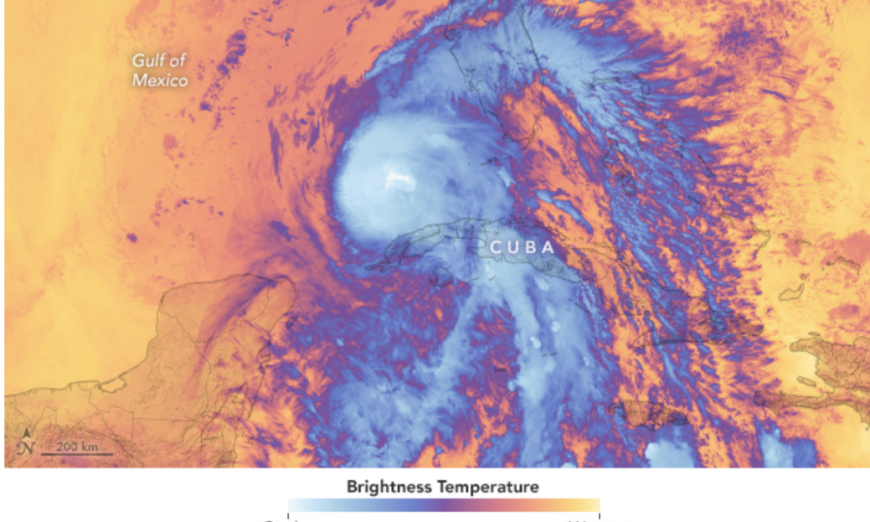November 7, 2024..
Hurricane Rafael made landfall in the western Cuban province of Artemisa as a Category 3 storm on the afternoon of November 6, 2024. The hurricane approached the island from the south, having skirted past Jamaica the previous day as a tropical storm. Approaching Cuba, it traversed warm waters and encountered light to moderate vertical wind shear—environmental conditions that helped the storm to strengthen into a major hurricane.
Rafael’s sustained wind speeds peaked at 115 miles (185 kilometers) per hour prior to landfall, reported the National Hurricane Center (NHC). It weakened slightly upon encountering land, downgrading to a Category 2 storm as it moved across Cuba and tracked northwest into the Gulf of Mexico.
The VIIRS (Visible Infrared Imaging Radiometer Suite) sensor on the NOAA-21 satellite captured this false-color image of the storm at about 1:45 a.m. Eastern Time (06:45 Universal Time) on November 7, approximately 8 hours after entering the gulf. The image depicts infrared signals known as brightness temperature, which is useful for distinguishing cooler cloud structures (white and purple) from the warmer surface below (yellow and orange). At the time the image was acquired, Rafael was a Category 2 hurricane with sustained winds of 105 miles (170 kilometers) per hour.
According to news reports, the Cuban government announced the hurricane had knocked out power across the entire island before landfall. Several airports suspended flights. Western Cuba was expected to receive 4 to 8 inches (100 to 200 millimeters) of rainfall from the storm system, according to the NHC, with several inches also forecast for the Cayman Islands and Florida Keys. The NHC also warned of strong storm surge that could raise water as much as 14 feet (about 4 meters) above normal levels along Cuba’s southern coast.
As of the morning of November 7, forecasters expected Rafael to move slowly to the west and remain a hurricane for several days, though it could weaken as it encounters a dry airmass in the southern Gulf of Mexico. The longer-term forecast remained uncertain.
Consistent with National Weather Service predictions, it has been an active year for hurricanes in the North Atlantic. Rafael is the 17th named storm and 11th hurricane of the 2024 season, which runs from June 1 to November 30. These numbers exceed the average seasonal totals of 14 named storms and seven hurricanes.
NASA Earth Observatory image by Wanmei Liang, using MODIS and VIIRS data from NASA EOSDIS LANCE, GIBS/Worldview, and the Joint Polar Satellite System (JPSS). Story by Lindsey Doermann.
Source, NASA.

